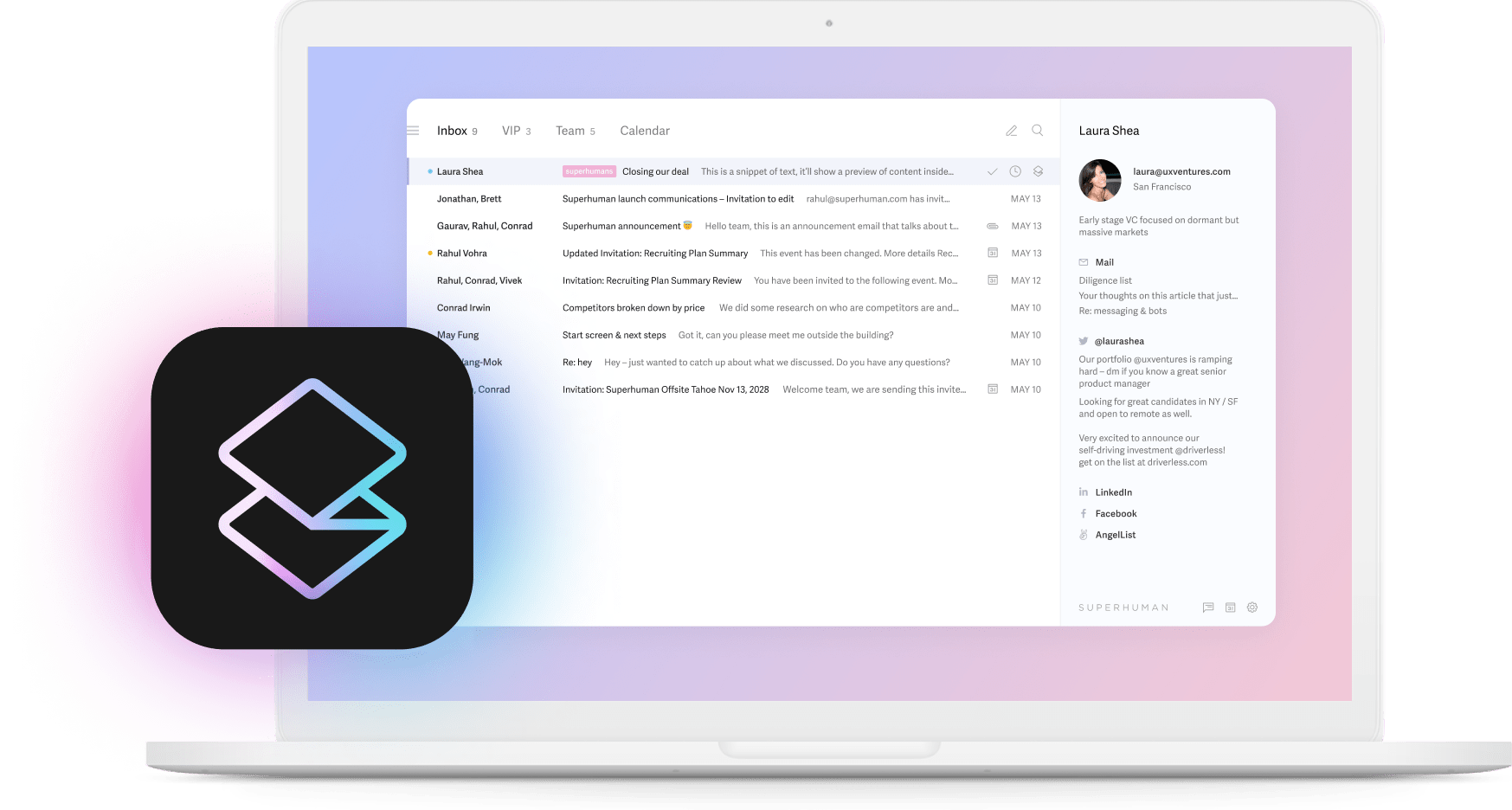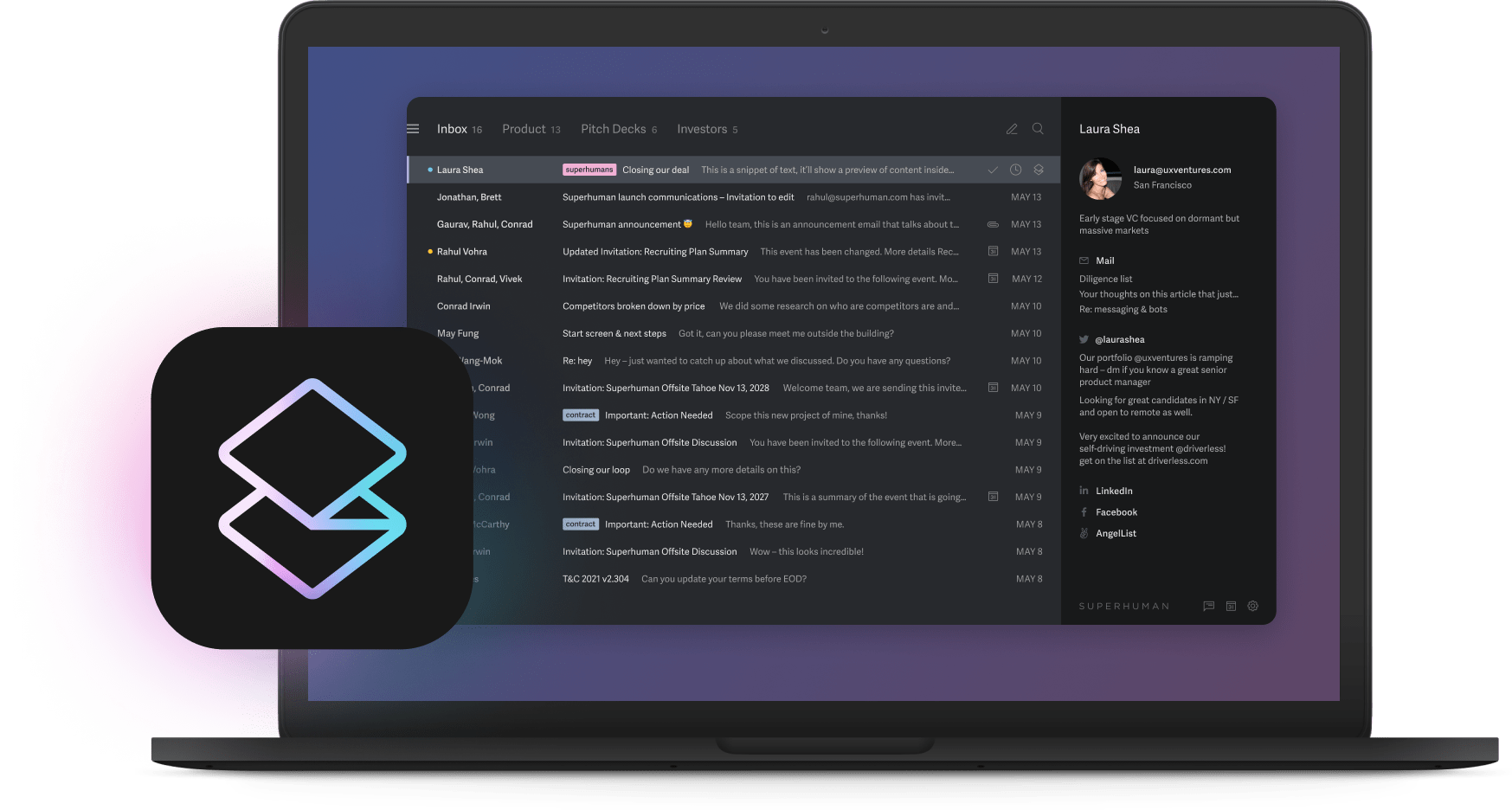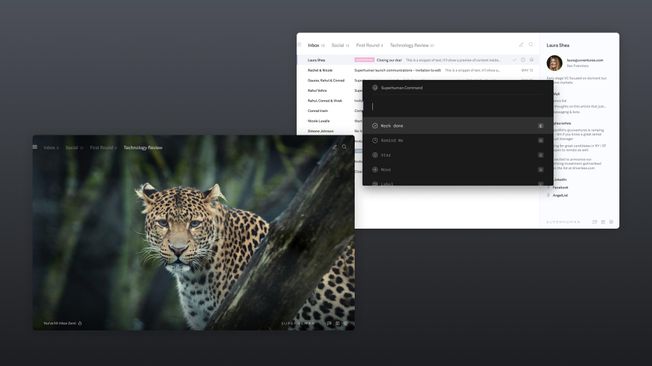
Your inbox is stealing your most productive hours. While you're buried in follow-ups, status updates, and endless email chains, the strategic work that actually moves your business forward sits waiting.
Automated email marketing fixes this. It handles those repetitive touchpoints in the background, ensures every important stakeholder hears from you at exactly the right moment, and gives you back the time you need for high-value work.
Teams using the right automation respond to twice as many emails in the same amount of time and save 4 hours per person every week.
In this guide, you'll see exactly how the most productive teams set up automation, measure the time saved, and turn email into their competitive advantage.
What is automated email marketing?
Automated email marketing is a technology-driven approach that uses pre-configured workflows to send targeted emails to specific audiences based on predetermined triggers, user behaviors, or scheduled timing.
Unlike manual email campaigns that require individual sending for each message, automated systems execute communication sequences without manual intervention once the initial setup is complete.
The system operates through three core components. Triggers activate when contacts take specific actions or when predetermined dates arrive. Segmentation organizes audiences by behavior, engagement level, or demographic characteristics.
Personalization adjusts message content to maintain relevance for each recipient. Building the right foundation starts with email marketing list-building strategies that ensure your segments have quality contacts from day one.
How automated email marketing works
Email automation runs a simple loop that repeats until every contact hears from you at the perfect moment. Think of it as an engine that keeps moving while you focus on strategy.
You start with audience segmentation. Contacts get grouped by behavior, role, or engagement instead of sitting in one giant list. Modern platforms use AI-driven segmentation to learn from every click, purchase, or page view. Each group keeps refining itself without extra work.
Next comes the trigger. A welcome signup, an unopened message, or a calendar milestone can launch an email. Smart event-triggered automation beats the old blast approach because messages arrive when recipients are already paying attention.
With triggers in place, you design the sequence. Templates keep your personal voice intact while AI suggests subject lines, images, or full paragraphs. Generative AI has shrunk production cycles from weeks to days. You can launch new workflows almost as fast as you think of them.
Analytics close the loop. Dashboards track opens, clicks, and conversions in real time. If a step underperforms, automated A/B testing suggests a better subject line or send time. The workflow updates itself, learning over time, so every sequence gets sharper and your inbox stays lighter.
The best part? It all happens while you work on higher-value projects. Many businesses rely on automation because it runs 24/7, never forgets a follow-up, and never needs a coffee break.
Contacts → Segmentation → Trigger → Sequence → Analytics → Refine → (loop)
Set the loop once, and your email engine runs in the background, freeing hours every week and ensuring nothing important slips through. For a deeper dive into the step-by-step workflow automation process, explore practical strategies for mapping and refining your workflows.
Benefits of automated email marketing
Email automation replaces hours of manual work with smart workflows that run in the background, so you reclaim time without sacrificing quality. Here's what teams gain:
Time savings that compound weekly: Teams save 4 hours per person every week, and according to our AI productivity report, professionals who use AI features save 37% more time than those who don't. Because sequences fire the moment a trigger occurs, follow-ups land while the topic is still fresh, even if you're already in your next meeting.
Consistency without the mental load: Once a workflow is live, every new lead, client, or teammate receives the same polished welcome, the same timely reminder, the same friendly check-in. No more sticky notes reminding you to "circle back."
Personalization that scales: AI-native segmentation tailors subject lines, offers, and timing to each contact so messages feel handcrafted, not templated.
Dynamic content blocks even adjust after send, keeping information current without another pass through your drafts. Learn how to write personalized emails at scale with team snippets to maintain authentic relationships while automating outreach.
Essential features of successful automated email marketing systems
When exploring email automation systems for your team, prioritize features that handle repetitive tasks while enhancing overall productivity:
- Behavioral triggers based on actions like email opens, clicks, or time-based schedules ensure communication arrives when it's most relevant
- Smart segmentation tools group contacts by engagement level, behavior, or specific roles so every message resonates with its audience
- Template libraries with personalization options maintain your voice while scaling outreach efforts across various contexts
- Analytics dashboards track opens, clicks, conversions, and overall engagement to continuously optimize performance
- Integration capabilities connect email marketing software with CRM systems, calendars, and other tools to form a cohesive technological ecosystem
- AI and machine learning predict engaging content, optimize send times, and even create content automatically
The best systems integrate naturally into your workflow, offering a seamless experience that feels native rather than an afterthought.
Real-world use cases for knowledge workers
Email automation buys back hours that used to vanish one message at a time. Here's how fast-growing teams reclaim that time while keeping communication personal.
- B2B sales and client management: The moment a new lead fills out your form, they receive a welcome message that feels personally crafted. After every demo or meeting, a crisp recap lands in their inbox within minutes. When prospects go cold, a timed re-engagement series nudges them back into conversation without you lifting a finger.
- Team leadership and internal communication: New hires get guided through an onboarding journey that delivers exactly what they need on day one, week one, and month one. When projects hit key milestones, status updates reach the right stakeholders automatically. Distributed teammates working across time zones receive perfectly timed check-ins that keep everyone connected.
- Customer success and account management: Customer success teams use automation to celebrate renewals and anniversaries with tailored thank-you notes. Feedback requests trigger after major product milestones. When usage patterns hit certain thresholds, relevant upgrade recommendations appear in customers' inboxes at exactly the right moment.
- Real customer examples: Hebbia uses automated follow-ups to keep investor conversations moving without late-night copy-paste sessions. Rilla's sales team routes every qualified lead into a multi-step nurture sequence that runs while reps focus on high-stakes calls. UserGems relies on automated reminders to nudge prospects exactly when buying intent peaks. Each team maintains its unique voice by writing once, saving as a Snippet, and letting automation handle the timing.
Common mistakes in email automation and how to avoid them
Automated email can save you hours, yet small missteps quickly erase that gain. Avoid these pitfalls to keep your inbox fast, personal, and reliable:
- Over-automation damages relationships. Let sequences handle routine updates, confirmations, and reminders, but write mission-critical notes yourself so relationships still feel human. Your customers can tell when you've automated everything, and it damages trust.
- Poor segmentation kills performance. Sending the same message to everyone drags open rates and raises unsubscribes. Build segments by behavior and role, then tailor content for each group. Your CFO doesn't need the same message as your junior developer.
- Set-and-forget thinking hides declining performance. Review opens, clicks, and replies every month, prune weak steps, and double down on what works. Analytics aren't decoration—they're your roadmap to better results.
- Complicated workflows break easily. Start with a simple path, validate results, then layer in extra triggers only if they drive measurable impact. Complexity for its own sake wastes the time you're trying to save.
Master these basics, and automation shifts from risky to effortless, freeing your time for higher-value work.
Comparing leading automated email marketing tools
Choosing the right platform can mean the difference between a team that dreads the inbox and one that flies through it. Here's how the leading options compare:
For knowledge workers who need more than marketing automation:
Superhuman Mail delivers an email experience that handles routine tasks while staying personal. Instant Reply drafts overnight responses in your voice, Auto Summarize cuts long email conversations to a sentence, and Split Inbox keeps critical messages front and center. The result is measurable: teams save 4 hours weekly, reply faster, and handle twice as many emails in the same period.
Best practices for implementing automated email marketing
Start with quick wins, stay human, and keep improving. That simple formula turns email automation into a reliable time-saver instead of another inbox headache.
Begin with high-impact, low-complexity workflows:
- Welcome sequences for new contacts
- Meeting follow-ups that trigger from calendar events
- Monthly client check-ins on a fixed schedule
Set clear goals for each workflow to make results measurable. A welcome sequence, a short meeting follow-up, and a monthly client check-in can run on autopilot within an afternoon and immediately free hours each week.
Protect your authentic voice: Write every template as if you're speaking to a colleague, then let AI-native tools match your tone for each recipient. Your messages stay personal even while they scale across hundreds of contacts.
Test and iterate relentlessly: Automated sequences should never be "set and forget." Track open, click, and reply rates, then swap subject lines or send times when numbers dip. Automated A/B testing makes this a daily habit instead of a quarterly chore.
Measuring success of email automation: KPIs that matter
Start by tracking the time you win back. Hours saved each week reveal whether automation is doing its job, and they are easy to capture with a simple before-and-after time study.
Time-based metrics:
- Hours saved per person each week
- Drop in average email processing time
- Percentage of workday spent on strategic projects vs. inbox management
Engagement metrics:
- Open rates and click-through rates for every automated sequence
- Response rates compared to manual outreach
- Engagement breakdown by segment to refine targeting
To dive deeper into tracking and improving these metrics, explore the best email analytics tools for teams that provide operational reporting and strategic insights.
Business impact metrics:
- Conversion rates from automated sequences
- Revenue attributed to automation efforts
- Client retention rates after automated touchpoints
Team productivity metrics:
- Emails handled per hour (teams using productivity tools process significantly more)
- Average response time improvements (smart tools help teams reply hours faster)
- Inbox zero achievement rates across your team
Pair these quantitative numbers with qualitative feedback about how much lighter the inbox feels and which high-value projects are now getting attention. When you link hard data to real business outcomes, you prove that email automation helps teams reclaim substantial hours every single week.
Start automating your email marketing today
Email automation transforms your inbox from a time drain into a productivity engine. You reclaim hours every week by letting workflows handle routine messages while you focus on strategic work that drives real business results.
Ready to save 4 hours every week and respond to twice as many opportunities? Start your free trial of Superhuman Mail →





